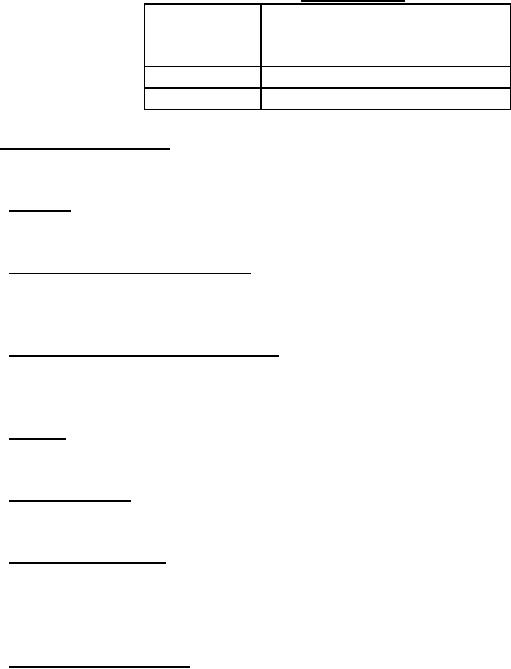
A-A-52412A
Table II. Damping time.
Indicator
movement
Temperature
time
0.5 sec
77 ± 18 °F (25 ± 10 °C)
10 sec
-26 °F (-32 °C)
3.9 Operating temperatures. The inclinometer shall not be damaged when exposed to
temperatures of -65 °F (-54 °C) to 158 °F (70 °C).
3.10 Leakage. The size of the air bubble shall show no appreciable change after exposure to a
temperature of 140 °F (60 °C) for 1 hour.
3.11 Relative humidity (nonoperating). The inclinometer shall not be damaged when exposed to
a relative humidity of 2 percent at 155 °F (68 °C) and 100 percent at 86 °F (30 °C) for a period
of 24 hours.
3.12 Atmospheric pressure (nonoperating). The inclinometer shall not be damaged when
exposed to an atmospheric pressure equivalent to an altitude of 40,000 feet (ft)
[12,192 meters (m)].
3.13 Salt fog. The inclinometer shall not show any signs of damage after being subjected to a 5
percent saline atmosphere for a 48 hour period.
3.14 Fungus resitance. The inclinometer shall be constructed of materials that will not support
fungus growth.
3.15 Shock (nonoperating). The inclinometer shall not be damaged when exposed to half-sine
wave shock impulses of 25 gravity units (g) applied along three mutually perpendicular axes for
11 milliseconds and have the velocity change (Vi) of 6.8 feet per second (ft/sec) [2.1 meters per
second (m/sec)].
3.16 Vibration (nonoperating). The inclinometer shall not be damaged when exposed to a
simple harmonic motion applied along three mutually perpendicular axes at a peak acceleration
of ±10 g at all frequencies within a range of 55 to 2000 hertz (Hz) for type I and a range of 20 to
2000 Hz for type II. Frequency sweep time shall be logarithmic and sweep time shall be 35 ± 5
minutes. In addition, the inclinometer shall withstand 5 minutes vibration at each observed
resonant frequency.
3
For Parts Inquires submit RFQ to Parts Hangar, Inc.
© Copyright 2015 Integrated Publishing, Inc.
A Service Disabled Veteran Owned Small Business